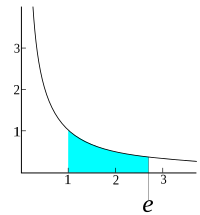
A brief exposure to rightward prismatic adaptation changes resting-state network characteristics of the ventral attentional system
Sign Up to like & getrecommendations! Published in 2020 at "PLoS ONE"
DOI: 10.1371/journal.pone.0234382
Abstract: A brief session of rightward prismatic adaptation (R-PA) has been shown to alleviate neglect symptoms in patients with right hemispheric damage, very likely by switching hemispheric dominance of the ventral attentional network (VAN) from the… read more here.
Keywords: ventral attentional; network; prismatic adaptation; resting state ... See more keywords

‘See Me, Feel Me’: Prismatic Adaptation of an Alien Limb Ameliorates Spatial Neglect in a Patient Affected by Pathological Embodiment
Sign Up to like & getrecommendations! Published in 2019 at "Frontiers in Psychology"
DOI: 10.3389/fpsyg.2018.02726
Abstract: Pathological embodiment (E+) is a specific contralesional delusion of body ownership, observed following brain damage, in which patients embody someone else’s arm and its movements within their own body schema whenever the contralesional ‘alien’ arm… read more here.
Keywords: arm; prismatic adaptation; pathological embodiment; body ... See more keywords

Right-deviating prismatic adaptation reduces obsessions in a community sample
Sign Up to like & getrecommendations! Published in 2022 at "Frontiers in Psychology"
DOI: 10.3389/fpsyg.2022.1025379
Abstract: Background and aims Patients with obsessive-compulsive (OC) disorder are impaired in disengaging attention from negative valence stimuli and show an attentional bias toward the right space. This pattern in OC disorder is similar to the… read more here.
Keywords: right deviating; deviating prismatic; adaptation reduces; reduces obsessions ... See more keywords

The Effect of Cognitive Style on Individual Differences in Prismatic Adaptation: A Pilot Study
Sign Up to like & getrecommendations! Published in 2023 at "Brain Sciences"
DOI: 10.3390/brainsci13040641
Abstract: Prism adaptation (PA) is a well-known and widely used technique for rehabilitating unilateral spatial neglect and studying sensory–motor plasticity. However, there is conflicting evidence in the literature regarding its effectiveness which may arise from differences… read more here.
Keywords: adaptation; individual differences; cognitive style; effect cognitive ... See more keywords